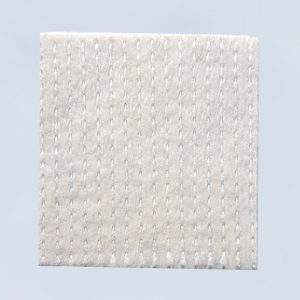Descrizione
InfoProdotto
The Pharmacoll® product line represents a gelatine free hydrocolloid wound dressing that convert into a gel when in contact with wound fluid. The moist wound environment created under the dressing speeds the natural healing process, reduces pain, and protects against bacterial and other external contaminants.
Pharmacoll®Thin and Pharmacoll® Extra Thin are gelatin free hydrocolloid adhesive wound
dressings, laminated to a semi-permeable, bacteria-proof, virus-proof and waterproof polyurethane film backing.
The difference between the 3 variants is the thickness of the hydrocolloid layer,
Pharmacoll® is 1 mm thickness
Pharmacoll® Thin is 0.6 mm
Pharmacoll® Extra Thin is 0.3 mm
• Adhere to both dry and moist skin surfaces.
• Deliver gentle and secure adhesion that does not irritate the skin.
• Have fluid absorption capacity that is adjustable based on adhesive formula.
• Provide barrier properties to external contaminants with secure adhesion to skin.
• Are flexible and conformable and mold to difficult anatomical contours.
-
- Partial- and full-thickness dermal ulcers.
- Pressure, Leg and Diabetic ulcers.
- Burns (First and Second Degrees).
- Skin Donor sites and Skin grafts.
- Superficial wounds/minor abrasions.
- Protection of fragile skin or areas exposed to friction such as elbows, heels or the sacral area.
- Ostomy wounds to protect the skin from stomal effluent.
- Medicazioni post-operatorie per la protezione della linea di sutura.
- Infants Diaper rash.
Don’t use on patient with known sensitivity to the product or any of its components specially Polyisobutenes and Carboxymethylcellulose.
1- Discoloration and bulging of the dressing indicate it should be changed
2- Wounds showing clinical signs of infection (temperature, pus, inflammatory signs) should be treated
under medical control before resume using of the dressing
Thick hydrocolloid island pad placed in the middle of a thin hydrocolloid layer.
The thin hydrocolloid layer is laminated with a semi permeable, bacteria proof, viral proof and waterproof polyurethane film.
When Pharmacoll® dressing comes into contact with wound exudates, the hydrocolloid swells and forms a gel that
covers the wound and maintains moisture. This gel continues absorbing the wound fluid and minimizes adherence
to the wound. When the dressing is changed, the wound stays protected by a film of gel.
- Clean wound area.
- Evaluate the wound and select the dressing size to allow 2.5 cm (1 inch) of the hydrocolloid adhesive to extend beyond the wound edge.
- Open the pouch and handle the dressing using gloves/forceps.
- Rimuovere il rivestimento protettivo dalla medicazione.
- Centrare la medicazione sulla ferita e sull'area perilesionale, quindi premere delicatamente il lato adesivo della medicazione.
- È necessario prestare attenzione per evitare inutili stiramenti della medicazione, che possono provocare traumi meccanici alla ferita e alla cute circostante.
Rimozione della medicazione:
- Sollevare con cautela i bordi della medicazione (o il bordo della pellicola) premendo sulla pelle
- Continuare a sollevare i bordi fino a quando non siano tutti sollevati dalla superficie della cute.
- Esercitare una pressione sulla cute per separare la medicazione.
- Rimuovere delicatamente la medicazione, quindi ripiegarla su se stessa tirando con attenzione nella direzione della crescita dei peli.
- In alternativa, allungare la medicazione orizzontalmente e sollevarla faciliterà anche la rimozione nella maggior parte delle situazioni.
- Gettare la medicazione nell’apposito cestino dei rifiuti.
How often to change the
dressing:
- La medicazione dovrebbe rimanere in posizione il più a lungo possibile.
- Se vengono rilevate perdite, la medicazione deve essere cambiata immediatamente.
- Change the dressing when maximum absorption has been reached.










Recensioni
Ancora non ci sono recensioni.